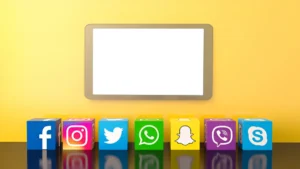The idiom “On the Back Burner” began as a kitchen phrase, but it’s much more than just a casual saying. This layered expression is filled with meaning and holds strong cultural relevance. Originally rooted in literal stovetop practice, it was used to describe how cooks left food simmering while they focused on more important dishes. That concept later evolved and became commonly used in corporate, political, and personal contexts. When I think of tight work schedules, I often reflect on projects that had to wait – not because they didn’t matter, but because of shifting priorities. It’s a simple way to communicate a strategy without implying that something was abandoning or canceled. It just got temporarily moved aside.
There’s psychological depth in this everyday saying. It helps people analyze and shift their attention, especially when facing multiple decisions and looming deadlines. Sometimes, putting goals on pause isn’t a setback; it’s a sign of wisdom. In my experience, a well-timed delay often leads to stronger outcomes. If you explore the nuance behind this idiom, you’ll see how it connects with our habits, conversations, and our need to make sense of complex schedules. A thoughtful guide to this kind of focus brings lasting insight, especially in fast-moving environments – even more relevant today than ever.
Understanding the Idiom “On the Back Burner”
To say something is “on the back burner” means that it’s being postponed or given a lower priority – but it’s not entirely forgotten. Like a pot simmering on a stove’s back burner, the task or issue remains in mind, just not actively addressed.
“We’ll revisit that next quarter; it’s on the back burner for now.”
Key Characteristics
- Deferred but not dismissed
- Still relevant but not urgent
Implies future attention
Comparison
| Phrase | Implied Meaning | Priority Level |
| On the back burner | Delayed but active | Low |
| Put on hold | Temporarily paused | Medium |
| Canceled | Discontinued | None |
Origins of “On the Back Burner”
The idiom finds its roots in literal kitchen usage. On a stovetop, front burners are used for active cooking, while back burners hold pots that simmer or stay warm.
The phrase transitioned into figurative language during the 20th century, reflecting how people prioritized tasks in business and daily life.
Historical References
- First recorded use: Early 1900s in American kitchens
- Popularized in workplace and political commentary by the 1950s
“Don’t worry about the expansion plan right now; it’s on the back burner until we sort out the funding.”
Historical and Cultural Journey
From Kitchen to Culture
The transition from kitchen jargon to idiom mirrors cultural shifts in how we talk about prioritization. As societies became more complex, people needed expressions to describe multi-tasking, strategic delays, and intentional inaction.
Cross-Cultural Comparisons
- French: “mettre de côté” (set aside)
- German: “etwas auf Eis legen” (put something on ice)
- Japanese: “hochi suru” (leave unattended)
These expressions reflect similar thinking: delay without dismissal.
Usage Timeline (Google Ngram Data)*
| Year Range | Popularity Index |
| 1920-1940 | Low |
| 1950-1970 | Moderate |
| 1980-2020 | High |
*Based on frequency in English corpus data.
Literal vs. Figurative Meaning – A Deeper Breakdown
Literal Use
In its literal sense, the phrase refers to placing a pot or pan on the rear part of a stovetop to simmer or stay warm.
Figurative Use
Figuratively, it’s used to signal that a project or idea is not abandoned, but not urgent.
Examples
- Literal: “Move the soup to the back burner so it doesn’t boil over.”
- Figurative: “That website redesign is on the back burner until next fiscal year.”
Think of it like mental triage – not an emergency, but still on your radar.
Real-Life Usage Scenarios
Understanding how this idiom shows up in different environments reveals its flexibility.
Personal Life
- Putting off a vacation
- Delaying a fitness goal
- Deferring a serious conversation
Professional Contexts
- Product development cycles
- Marketing campaigns
- Hiring decisions
“The second app feature is on the back burner while we handle customer feedback.”
Cultural Examples
- Media headlines like “Climate Policy on the Back Burner Again”
- TV shows delaying plotlines for later seasons
The Idiom in the Corporate & Political World
Corporate Use
In business, this phrase often reflects strategic prioritization.
- Delayed initiatives
- Budget-restricted ideas
- Market-dependent launches
Case Study: Apple Inc.
Apple famously shelved its AirPower wireless charger in 2019. Internally, the project stayed “on the back burner” due to heat management issues until finally canceled.
Political Rhetoric
Politicians often use this idiom to deflect accountability:
- “Healthcare reform is on the back burner while we address inflation.”
This communicates postponement without closing the door.
| Use Case | Example |
| Corporate Strategy | “M&A activity is on the back burner this quarter.” |
| Political Framing | “Campaign finance reform is on the back burner.” |
Common Misuses and Mistaken Interpretations
Common Errors
- Using the phrase to mean something is canceled – it’s not.
- Misapplying it in urgent scenarios (e.g., health crises)
Tips for Accurate Use
- Use only when something is delayed, not discarded
- Avoid using in high-stakes or emotionally sensitive topics
Examples of Incorrect Usage
❌ “We put her treatment on the back burner.”
✅ “We put the renovation plans on the back burner until winter passes.”
Psychological and Emotional Impact of “Back-Burnering” Things
Putting something on the back burner often has emotional consequences, especially for the person or group affected.
Cognitive Insights
- Reflects executive function: the brain’s ability to prioritize
- Helps with cognitive load management
- Encourages delayed gratification in favor of more pressing tasks
Emotional Consequences
- May feel like rejection or neglect
- Can create ambiguity in teams or relationships
- Leads to anxiety if not followed up on
“She felt sidelined when the proposal she worked on was put on the back burner.”
Quotes from Experts
“When managers say a project is on the back burner, it can be perceived as indifference unless expectations are clearly communicated.” – Harvard Business Review
Related Idioms and Expressions
There are other phrases used to express delay or deprioritization, each with subtle differences.
Comparison Table
| Idiom | Meaning | Use Case Example |
| On the back burner | Temporarily not a priority | “We’ll get to it next month.” |
| Put on hold | Paused due to external/internal issues | “Budget review is on hold.” |
| Table it | Delayed until further notice | “Let’s table that discussion for now.” |
| Pencil in | Tentatively plan for later | “I’ll pencil you in for next week.” |
| In the pipeline | In progress but not prioritized | “The app feature is in the pipeline.” |
Final Thoughts
Understanding idioms like “on the back burner” is more than an exercise in vocabulary. It allows us to better grasp how language reflects cognitive strategy, emotional communication, and cultural nuance.
From political debates to kitchen conversations, this phrase continues to simmer in our collective speech, quietly signaling that something’s not forgotten – just cooking slowly in the background.
FAQs
What does “on the back burner” mean in everyday language?
“On the back burner” means putting a task, idea, or responsibility aside temporarily to focus on other priorities. It doesn’t imply abandonment, but rather a delay or lower prioritization. For example, someone might say, “I’ve put my vacation plans on the back burner while I finish this project.”
Is “on the back burner” used only in cooking or kitchen contexts?
No, although it originated from kitchen jargon, the idiom has expanded far beyond culinary use. Today, it’s commonly applied in professional, personal, academic, and political contexts to signify deprioritizing something without dismissing it completely.
What are common situations where people use this idiom?
People often use it in:
- Work environments (e.g., postponing a project)
- Relationships (e.g., delaying a conversation)
- Politics (e.g., shelving a policy debate)
- Daily tasks (e.g., skipping housework in favor of urgent errands)
Its flexibility makes it suitable for a wide range of scenarios where priorities shift.
What are common mistakes when using “on the back burner”?
One mistake is thinking it means something is completely forgotten or canceled. It actually implies intentional delay. Another error is using it in a literal sense outside of cooking, where it may confuse people if not clearly metaphorical.
How does the idiom reflect psychological decision-making?
Psychologically, placing something “on the back burner” allows the brain to conserve cognitive resources by reducing active focus on less urgent matters. It mirrors how attention, emotional investment, and mental bandwidth are allocated based on what we value or deem urgent.











